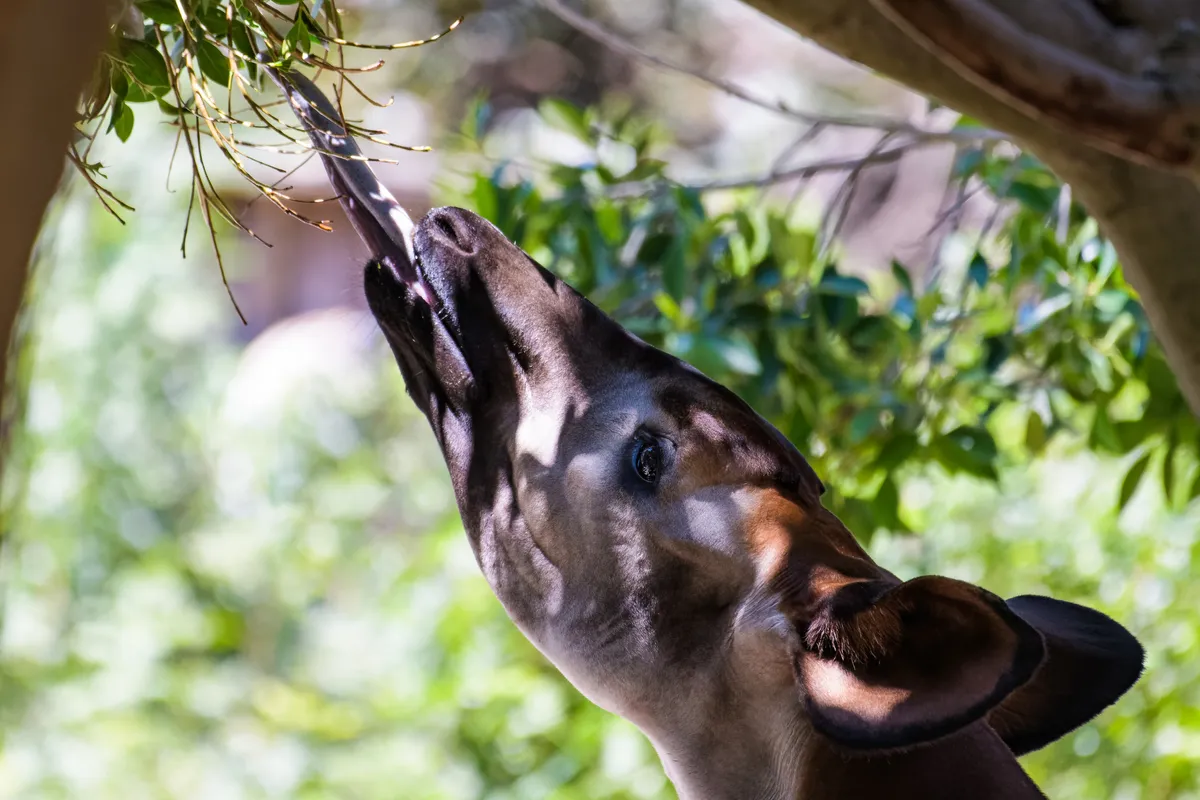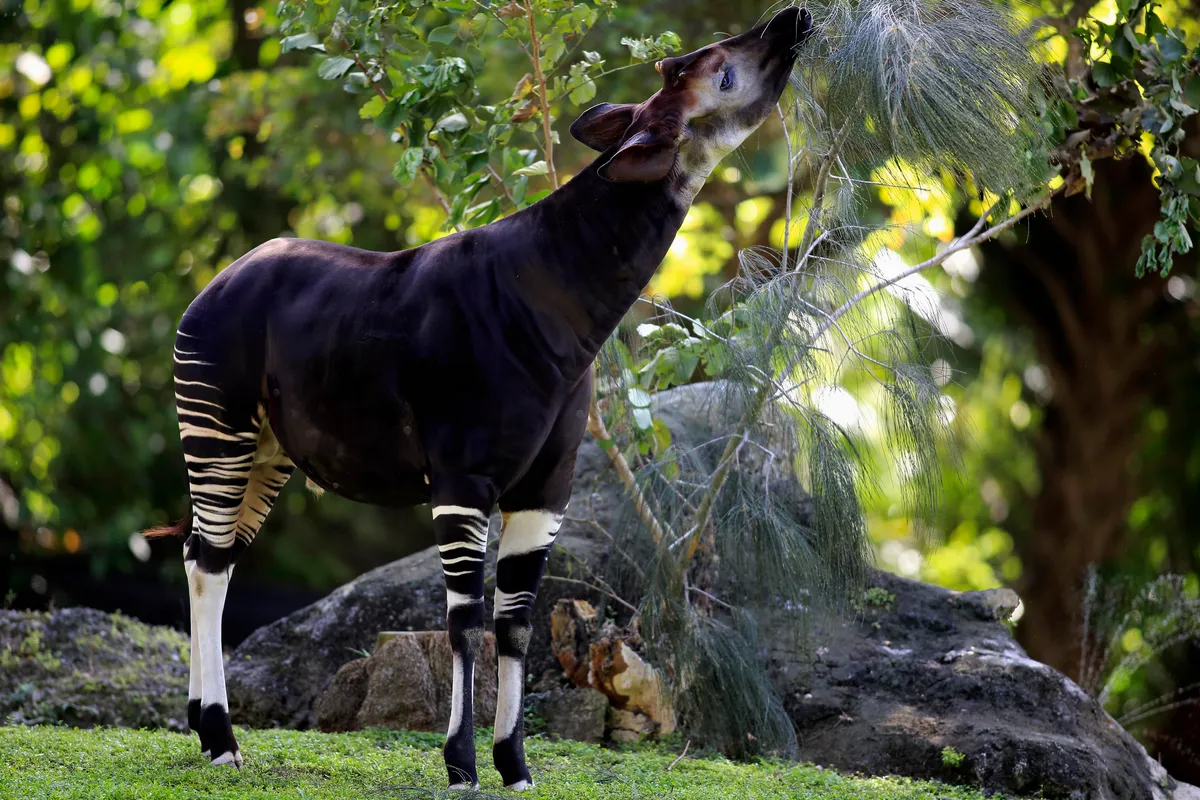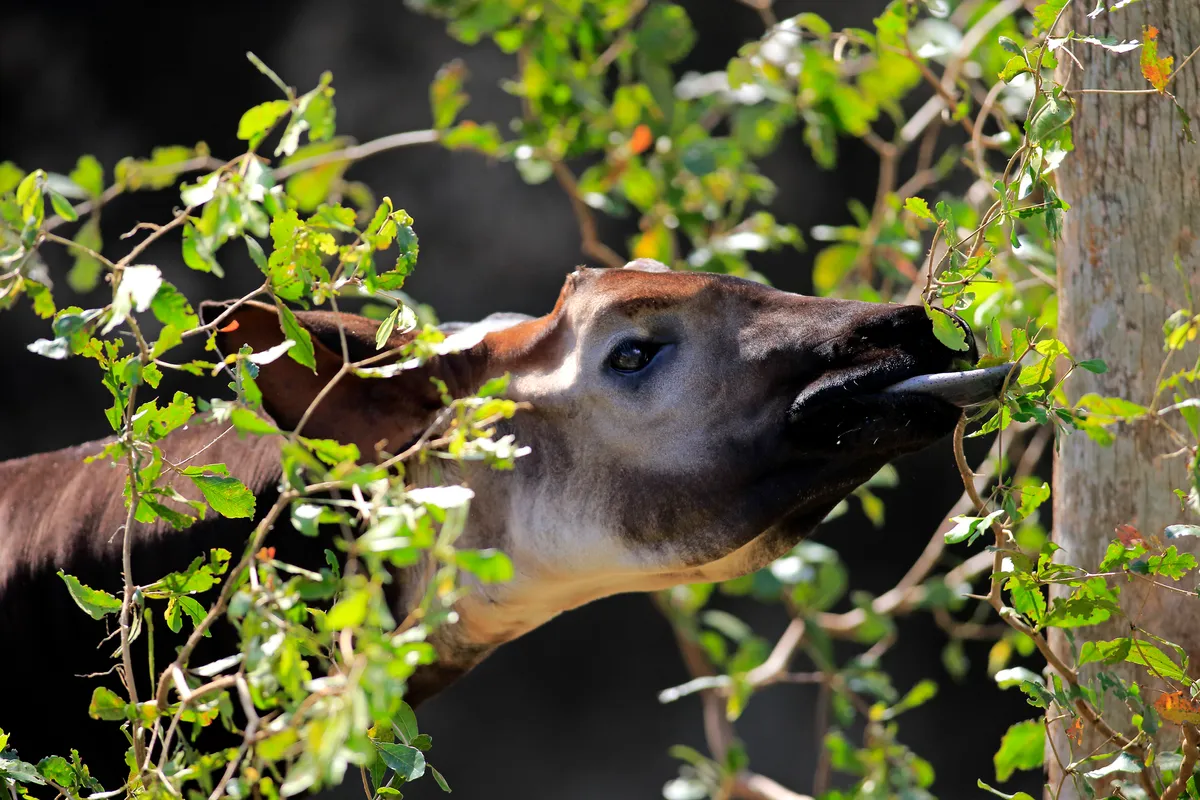What are okapi related to?
Okapi are the only living relative of the giraffe. Both are in the Giraffidae family, with girafffes in the Giraffa genus and okapi in the Okapia genus.
Giraffidae are ruminants, and share a common ancestor with deer and bovids. On first sight, the two Giraffidae look quite different but do share a number of similar features, including a long, dark-coloured tongue.
In the okapi, the tongue can measure between 14 and 18 inches long and they can lick their own ears and eyelids.

Where do okapi live?
Unlike their giraffe relatives, okapi are not found in open savannas but instead live in dense rainforest. Currently they are only found in the Democratic Republic of Congo, but in the recent past, they were also found in the Semliki forest of Uganda.
When were okapi discovered?
The okapi wasn't discovered by western scientists until the 1900s. Explorers in the 1880s heard rumours of a striped donkey, and it was named as a species (Okapia jonstoni) in 1901.
It was named 'Okapia' after the local word 'o'api' and 'jonstoni' in recognition of the British governor of Uganda, Sir Harry Johnston, who acquired an okapi specimen.
Do okapi live in groups?
Okapi are solitary animals, though their home ranges will overlap. These ranges average 3-5 km2 for adult females and up to 13 km2 for adult males.

Are okapi endangered? What are they threatened by?
Okapi are hunted for meat and skins, and a major threat to this species is habitat loss due to logging and human settlement.
Illegal armed groups in some protected areas have prevented effective conservation action. In June 2012, the Réserve de Faune à Okapis HQ was attacked, during which seven people and 14 captive okapi were killed.
The species is listed as Endangered on the IUCN Red List.
What do okapi eat?
Okapi are known to feed on over 100 species of plants, and whilst they are diurnal, they have been recorded feeding at night. They are the only species of forest ungulate which depends on understory foliage.

How many babies does a female give birth to?
Okapi gestation lasts between 14 and 16 months, and a female okapi gives birth to one calf. This calf says in one place for the first six to nine weeks, to avoid leopards.
To stay in contact with their calves in the dense rainforest, female okapi produce an infrasonic call at around 14Hz, which cannot be heard by humans.
Main image: Wild okapi are only found in the rainforests of the Democratic Republic of Congo. © Mint Images/Frans Lanting/Getty (photographed in captivity)